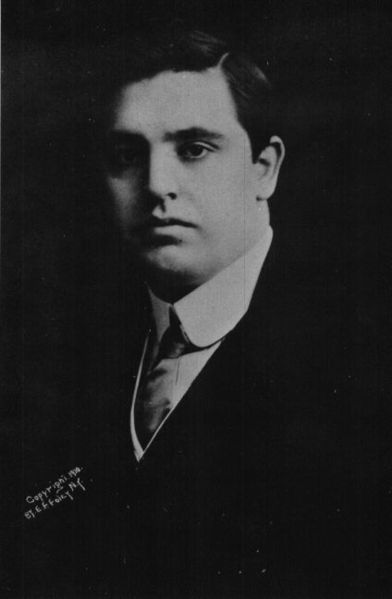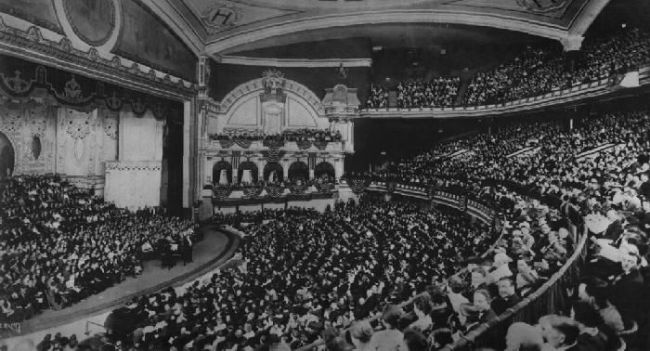| Irish Forums Message Discussion :: Count John McCormack |
   | Irish Forums :: The Irish Message
Forums About Ireland and the Irish Community, For the Irish home and Abroad. Forums include- Irish Music, Irish History, The Irish Diaspora, Irish Culture, Irish Sports, Astrology, Mystic, Irish Ancestry, Genealogy, Irish Travel, Irish Reunited and Craic
|  
|
Count John McCormack


|
|
|
| Irish
Author |
Count John McCormack Sceala Irish Craic Forum Irish Message |
jodonnell

Sceala Philosopher
Location: NYC
|
| Sceala Irish Craic Forum Discussion:
Count John McCormack
|
|
|
John McCormack

John McCormack [14 June 1884 – 16 September 1945], was a world-famous Irish tenor in the fields of opera and popular music, and renowned for his flawless diction and superb breath control.
Count John McCormack Early life
John Francis McCormack was born in Athlone, Ireland, the fourth of eleven children of Andrew McCormack and Hannah Watson on 14 June 1884, and was baptised in St. Mary's Church, Athlone on 23 June 1884. His parents were employed at the Athlone Woollen Mills.
John received his early education from the Marist Brothers in Athlone, and later attended Summerhill College, Sligo. In 1903 he won the coveted gold medal in the Dublin Feis Ceoil and it was this event which set him on his climb to success. John married Lily Foley in 1906 and the couple had two children, Cyril and Gwen.
John McCormack Career
Fundraising enabled his voice to be trained under Sabbatini in Italy. In 1906 he made his operatic début at the Teatro Chiabrera, Savona. In 1907 John McCormack made his first important operatic appearance at Covent Garden in Mascagni's Cavalleria Rusticana, as its youngest principal tenor. In 1909 he launched his career in America. Michael Scott ["The Record of Singing" 1978] notes that at this stage of his career he should be considered a tenor of the Italian style - and he sang [and recorded] French operatic arias in the Italian language. Steane ["The Grand Tradition" 1971] stress that, for all his later devotion to the concert platform [and his Irish identity], he was for albeit a relatively brief period in essence an Italian operatic tenor.
In 1911, McCormack toured Australia after Nellie Melba engaged him, then at the height of his operatic career aged 27, as a star tenor for the Melba Grand Opera Season. He returned for concert tours in subsequent years.
By 1912 he began to turn his attention increasingly to the concert stage, where his voice quality and charisma ensured that he became the greatest lyric tenor of his day. He did not however retire from the operatic stage until 1923 in Monte Carlo. Famous for his breath control, he could sing 64 notes on one breath in Mozart's Il Mio Tesoro.
He made numerous recordings, the first on phonograph cylinder in 1904. His most commercially successful series of records were those for the Victor Talking Machine Company in the 1910s and 1920s. He also regularly broadcast on the radio and appeared in a number of sound films.

John McCormack in the 5000 seat New York Hippodrome c.1915-1916
McCormack was the first artist to record the World War I hit song It's a Long Way to Tipperary, in 1914. In addition to deeply felt sentimental airs, he presented an openly political face: his recording of The Wearing of the Green, a song about the Irish rebellion of 1798, gave encouragement to the 20th century movement for Irish Home Rule Bill and endorsed the Irish Nationalist estrangement from England. McCormack was particularly associated with the songs of Thomas Moore, notably The Harp That Once Through Tara’s Halls, The Minstrel Boy, and The Last Rose of Summer.
In 1917 McCormack became a naturalized citizen of the United States. In June 1918 he donated $11,458 towards the USA's war effort in the First World War. By now his career was a huge financial success, earning millions in his lifetime from record sales and appearances, though he never was invited to sing at La Scala in Milan.
In 1927 McCormack moved into Moore Abbey, Monasterevan, County Kildare and lived an opulent life by Irish standards. He had central apartments in London and New York. He hoped that one of his racehorses, such as Golden Lullaby, would win the Epsom Derby, but was unlucky.
McCormack also bought Runyon Canyon in Hollywood in 1930 from Carman Runyon. McCormack fell in love with the estate while there filming Song 0' My Heart [1930], an early all-talking, all-singing picture. McCormack's used his salary for this movie to purchase the estate and built a mansion he called 'San Patrizio', after Saint Patrick. McCormack and his wife lived in the mansion until they returned to England in 1938.
McCormack toured often, and in his absence the mansion was often rented out to celebrities such as Janet Gaynor and Charles Boyer. The McCormacks made many friends in Hollywood, among them Will Rogers, John Barrymore, Basil Rathbone, C. E. Toberman and the Dohenys. After his farewell tour of America in 1937, the McCormacks deeded the estate back to Carman Runyon expecting to return to the estate at a later date. World War II intervened and McCormack did not return.
McCormack ended his career at the Royal Albert Hall in London in 1938. Ill with emphysema, he bought a house near the sea, "Glena", Booterstown, Dublin. He is buried in Deansgrange Cemetery.
Count John McCormack Honours
He was much honoured and decorated for his services to the world of music. His greatest honour came in 1928, when he received the title of Papal Count from Pope Pius XI in recognition of his work for Catholic charities. Although he often came to be referred to as Count John McCormack in his professional life, this title was officially recognised only within the Catholic Church. To many people the highlight of McCormack's Irish career was his singing of César Franck's "Panis Angelicus" to the thousands who thronged Dublin's Phoenix Park for the 1932 Eucharistic Congress.
|
|
|
|
|
|
|
|
|
|











